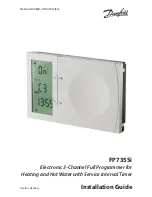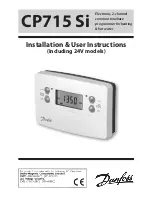
PRO-150 V1.0 11/18
Page 14
www.4qd.co.uk
9. Operation
Switching On
When you turn on the ignition to start the Pro-150 up, it performs a number of
system safety checks. During this period you may hear the three relays clicking and
the display may show a sequence - such as C0, C1, C2, C3. C4, C5 - as it
performs these checks. However, this checking is often too fast to see. If the
display gets stuck on one of these, the display will show a fault code, and the
sounder will beep a sequence of tones.
If all is well, the display will show a steady Pd [power down]. The Pro-150 is now
ready to work, as the speed is ramped up the display will show the battery voltage.
Standby
If Pro-150 is not used for 30 seconds it will turn off the display and go into a
standby mode.
Fault display
If there is a problem with any of these safety checks, or if a problem is detected
during operation, the display will flash a fault number, the beeper will sound a code
and the Pro-150 will not operate.
Two most likely faults the Pro-150 may detect during power-up are:
High Pot Lock Out [HPLO
] If you do not have the speed pot at zero speed
when you switch on, the display will show HL, the sounder will sound a
continuous tone, and the Pro-150 will not operate until you turn the speed pot
to zero. and keep it at zero for a short period. not operate until you turn the
speed to zero. The level at which HPLO operates can be adjusted.
Pot (or pot wiring) fault
If the Pro-150 detects a fault here, it will display Pt.
Other faults may occur and be detected, in this case the number displayed will
flash to indicate a fault has been found. More information on these can be found in
section 11
Operation
Once successful power-up has occurred, move the throttle to control the speed.
The further the throttle is moved, the higher the speed will be.
If a reversing switch is used, operate the reverse switch to change the motor
direction.
Acceleration and deceleration ramp times are controlled give a smooth throttle
response.
If the throttle is moved quickly, the speed changes smoothly at a rate depending on
the ramp time settings. The default acceleration is 4 seconds to full forward speed,
and 2 seconds to decelerate from full forward speed to zero.














































